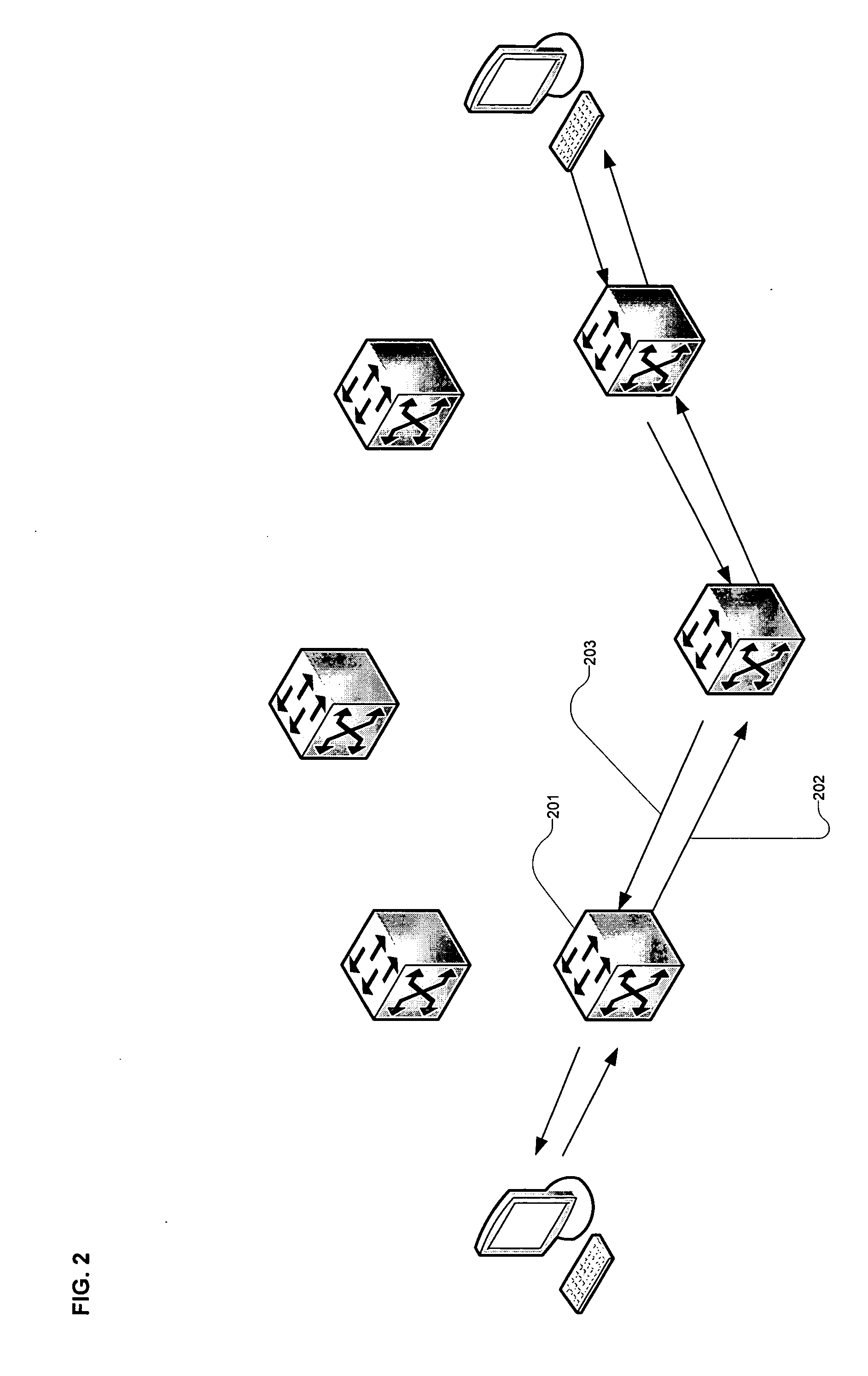Smart Ethernet edge networking system
a networking system and edge technology, applied in data switching networks, instruments, frequency-division multiplexes, etc., can solve the problems of increasing the workload of users, and reducing the service life of users
- Summary
- Abstract
- Description
- Claims
- Application Information
AI Technical Summary
Benefits of technology
Problems solved by technology
Method used
Image
Examples
Embodiment Construction
Path Association
[0024]Given the ability of the VMS to ensure that each direction of the connection uses the same path (as per FIG. 2), each network element (e.g. WiMAX switch) is able to (1) pair each forward 202 and backward 203 path of a connection at each node in the path of a connection and (2) allow for injection of messages in the backward direction of a connection from any node in the path. This capability, depicted in FIG. 3, is referred to herein as creating a “hairpin”303. The knowledge of the pairs at each node 201 allows creating loopbacks, and then using control packets at any point in a connection in order to perform troubleshooting. Loopbacks can also be created by the VMS or manually generated. The pairing is possible in this case because the VMS ensures that both paths of the connections (forward and backward) take the same route which is not currently the case for Ethernet
[0025]Other examples of uses for this path association could be where two uni-directional path...
PUM
 Login to View More
Login to View More Abstract
Description
Claims
Application Information
 Login to View More
Login to View More - R&D
- Intellectual Property
- Life Sciences
- Materials
- Tech Scout
- Unparalleled Data Quality
- Higher Quality Content
- 60% Fewer Hallucinations
Browse by: Latest US Patents, China's latest patents, Technical Efficacy Thesaurus, Application Domain, Technology Topic, Popular Technical Reports.
© 2025 PatSnap. All rights reserved.Legal|Privacy policy|Modern Slavery Act Transparency Statement|Sitemap|About US| Contact US: help@patsnap.com



